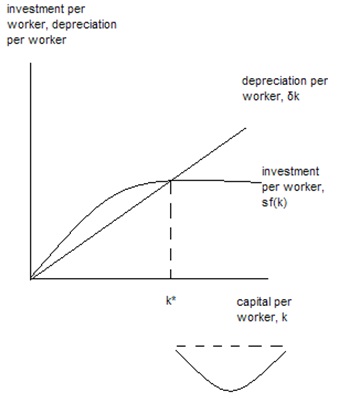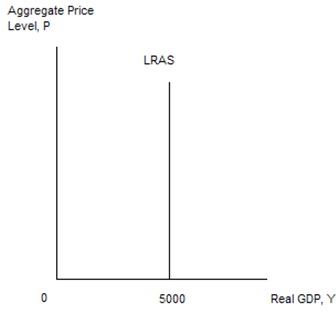Problem 1. You are given the following information about an economy.
Y = C + I
Y = F(K, L)
The aggregate production function for this economy exhibits constant returns to scale and the marginal products of labor and capital are both subject to diminishing returns.
s = saving rate (assume this is constant) per year
δ= depreciation rate (assume this is a constant) per year
y = Y/L
k = K/L
k* = steady state of capital per worker (K/L)
You are also told that sf(k) < δk.
a. What is sf(k)?
b. What is δk?
c. Interpret the meaning of sf(k) < δk?
d. Draw a graph illustrating both sf(k), δk, and k*. Indicate on your graph where sf(k) < δk. Be sure to label your graph completely.

e. Using the Solow Growth Model discussed in class, explain what happens in this economy when sf(k) < δk.
Problem 2. You are given the following aggregate production function for an economy:
Y = 10K1/2L1/2
You are also told that K equals 400 units of capital and L equals 625 units of labor. In addition, the money supply equals 10,000 and the velocity of money is constant and equal to 1.
a. What is an equation for the long-run aggregate supply curve (LRAS) for this economy?
b. Draw a graph depicting this long-run aggregate supply curve with real GDP. Y, on the horizontal axis and the aggregate price level, P, on the vertical axis. Label your graph thoroughly.

c. Using the given information, fill in the missing values in the table below which describe points lying on this economy’s aggregate demand curve.
P Y
1
-- 1250
500 --
d. What is the long-run equilibrium aggregate price level for this economy?
Problem 3. The U.S. unemployment rate is currently